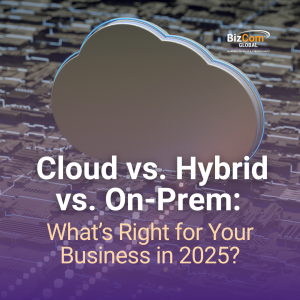
A business-focused look at the pros, cons, and strategic trade-offs between infrastructure types — and how to future-proof your choice.
For many business leaders, choosing the right IT infrastructure can feel like choosing between three buzzwords. Cloud. Hybrid. On-Prem.
And while the technical differences are important, what matters most at the leadership level is this:
Which option gives your business the best balance of performance, security, flexibility, and ROI — now and in the future?
Let’s break it down in plain business terms.
The Big Three: What They Mean in Practice
Cloud
Your systems and data are hosted offsite (typically in data centers like AWS, Microsoft Azure, or Google Cloud) and accessed via the internet.On-Prem (On-Premises)
Everything — servers, storage, systems — is located and managed at your physical business location(s).- Hybrid
A combination of both. You keep some critical systems or data on-site, while leveraging the cloud for other operations.
Cloud: The Flexible, Scalable Option
Best for: growing companies, remote/hybrid teams, businesses that need agility
Pros:
- Lower up-front costs (no hardware to purchase)
- Easy to scale as you grow
- Accessible from anywhere
- Built-in updates and redundancy
- Often includes robust security features
Cons:
- Monthly subscription costs can add up
- Less control over physical hardware and data location
- Dependent on internet access and provider uptime
Business Takeaway:
Cloud works well when speed, access, and flexibility are priorities — especially for companies with distributed teams or fast-changing needs.
On-Prem: The High-Control Option
Best for: businesses with strict regulatory requirements or data sensitivity
Pros:
- Complete control over hardware and access
- Potential long-term cost savings for stable, low-change environments
- May support custom legacy systems better
Cons:
- High up-front capital investment
- Requires in-house or contracted IT to manage
- Harder to scale quickly
- Vulnerable to local disasters (fire, flood, outage) if not backed up
Business Takeaway:
On-prem makes sense for highly regulated industries or companies with custom infrastructure needs — but it requires careful management and higher internal resources.
Hybrid: The Balanced, Strategic Option
Best for: businesses that want flexibility without giving up control
Pros:
- Flexibility to choose what runs where
- Improved disaster recovery (local + cloud backup)
- Optimized performance for different workloads
- Allows gradual transition to cloud
Cons:
- Requires a more sophisticated IT strategy
- Integration between systems must be carefully managed
- Higher complexity if not well-architect-ed
Business Takeaway:
Hybrid is ideal for businesses looking to modernize without fully giving up legacy systems — or those that need to meet regulatory demands while still scaling efficiently.
So... What’s Right for Your Business in 2025?
This isn’t a one-size-fits-all decision. It depends on:
- Your growth goals
- Compliance requirements (HIPAA, PCI DSS, etc.)
- Remote work and collaboration needs
- Budget and resource availability
- Your appetite for change
If you’re unsure, a short infrastructure assessment can clarify your best-fit path — including where your vulnerabilities are, where your team feels friction, and where the ROI lies.
Final Thought: Make Tech Work for Your Business — Not the Other Way Around
The right infrastructure supports your growth, protects your data, and keeps your team productive. The wrong one? It creates drag, risk, and unexpected costs.
Choosing between cloud, hybrid, and on-prem doesn’t have to be overwhelming — when the decision is grounded in your business strategy, it becomes a competitive advantage.
Not sure what infrastructure supports your 2025 goals?
Schedule a free IT Ecosystem Assessment with BizCom Global — and let’s align your tech with your business growth.


